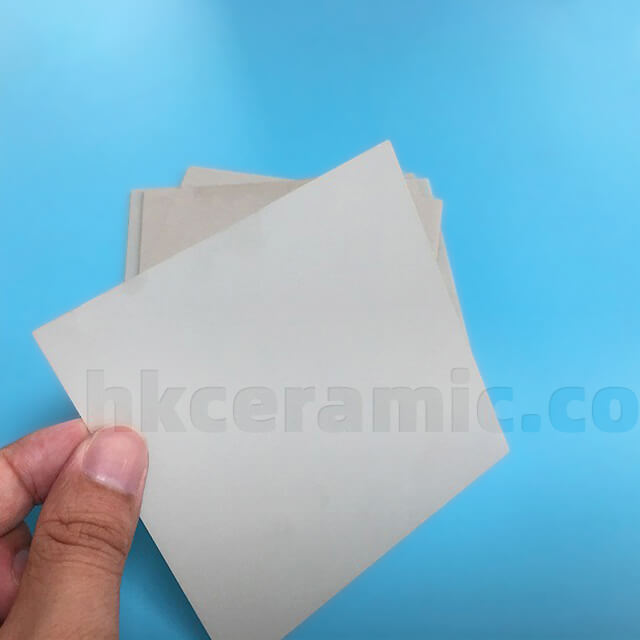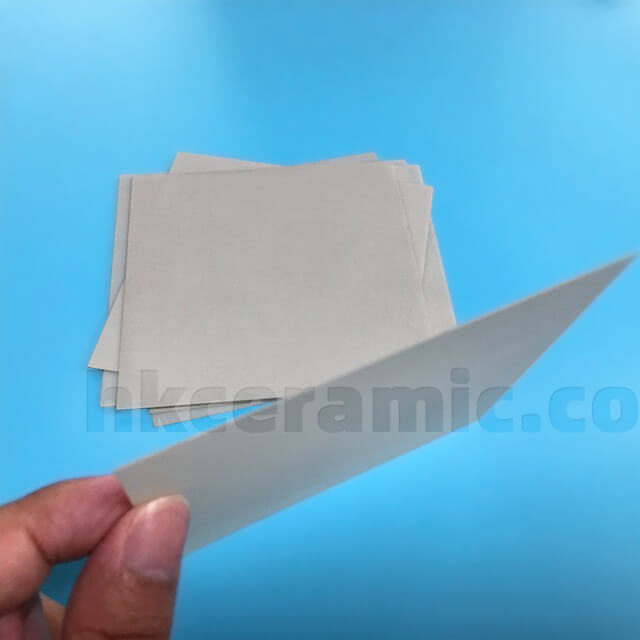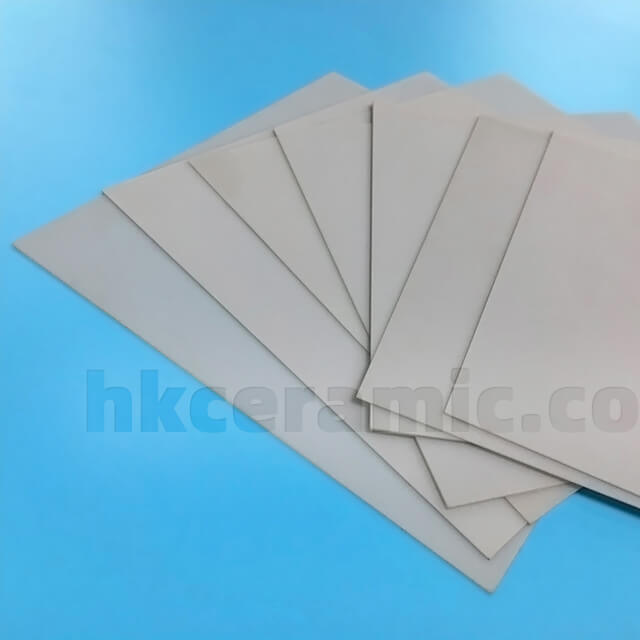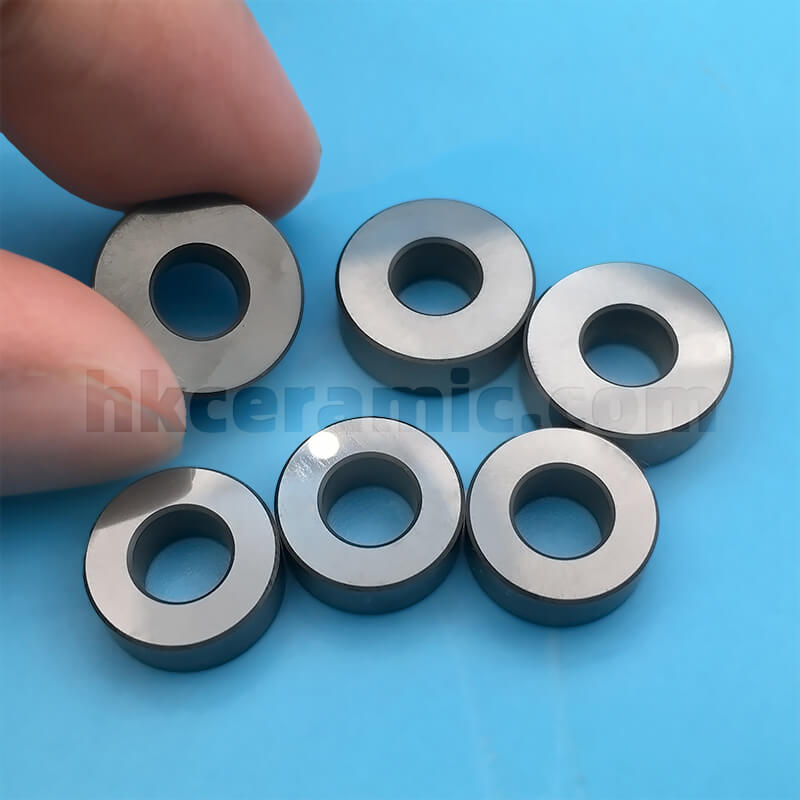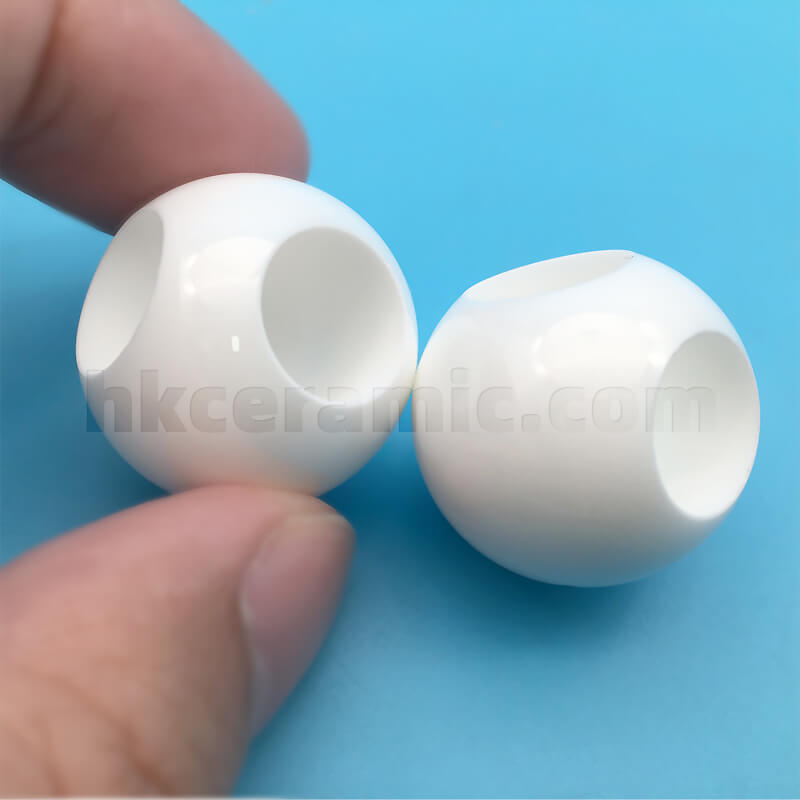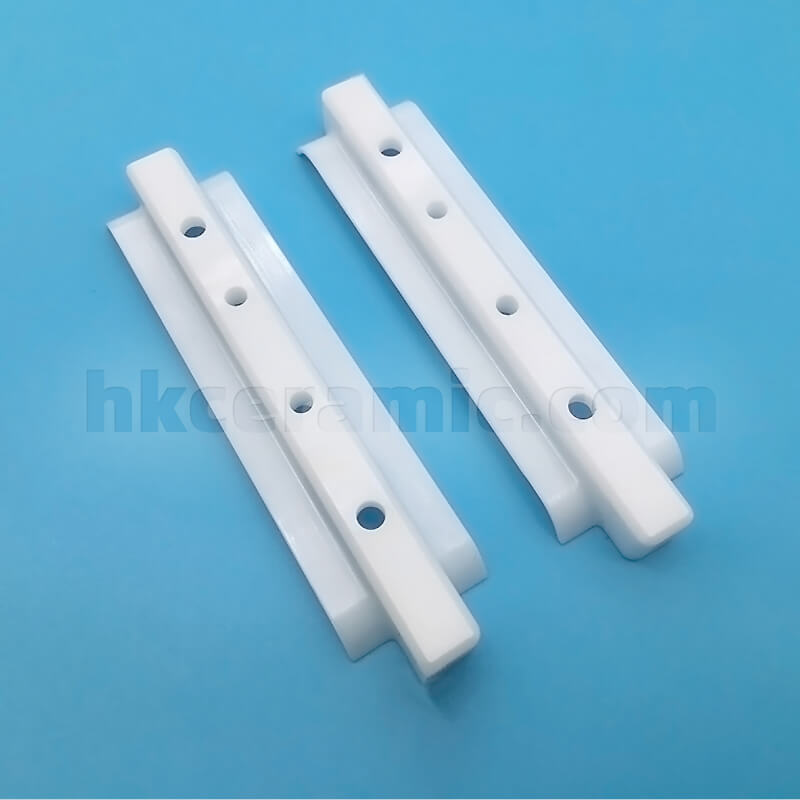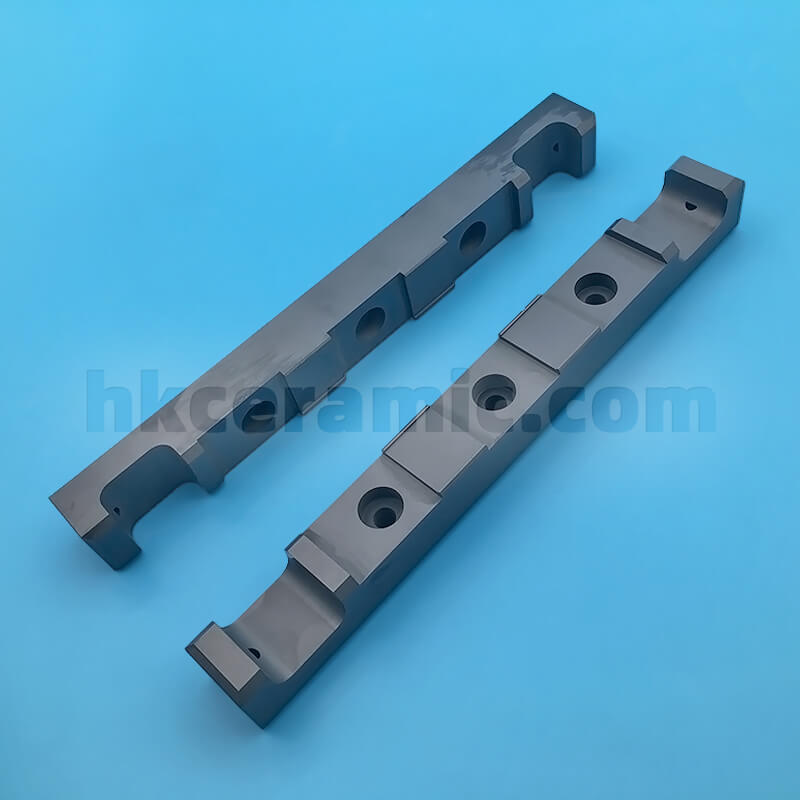Aluminum nitride heat sink
E-mail:sales01@hkceramic.com
Aluminum nitride heat sink, also known as high thermal conductivity ceramic cooling plate, leverages the high thermal conductivity and electrical insulation of aluminum nitride (AlN), providing efficient thermal management solutions for electronic devices:
High Thermal Conductivity
Aluminum nitride has a thermal conductivity of up to 170 W/m·K, allowing it to rapidly absorb and conduct heat from sources such as semiconductor devices, effectively dissipating heat to the surroundings through the large surface area of the heat sink.
Excellent Electrical Insulation
With a breakdown strength as high as 17-19 KV/mm and low dielectric loss, aluminum nitride heat sinks provide outstanding thermal management capabilities without compromising electrical insulation.
Low Thermal Expansion Coefficient
Its thermal expansion coefficient of 3.2-3.4×10-6/ºC, similar to that of silicon, ensures excellent compatibility with semiconductor materials during temperature variations, reducing stress caused by thermal expansion differences.
Good Thermal Stability
It can be used in oxygen-rich environments up to 1000°C and maintains stability with a thermal shock resistance of 400°C, making it suitable for operations in high-temperature environments.
Smooth Surface and Uniform Thickness
This helps improve thermal contact efficiency, reduce thermal resistance, and enhance heat dissipation performance.
Aluminum nitride heat sinks play a crucial role in many high-tech fields, especially in applications that require efficient heat dissipation:
High-Performance Computing Devices
Such as servers and workstations, these devices generate significant heat and require efficient cooling to maintain stability and high efficiency operation.
Power Semiconductors and Power Electronics
Including inverters and drive systems for electric vehicles, the heat generated by power components in these systems needs to be controlled through efficient thermal management.
LED Lighting Equipment
LED components generate high heat, and using aluminum nitride heat sinks can extend the lifespan of LEDs and maintain light efficiency.
Electronic Packaging
Aluminum nitride heat sinks are also widely used in semiconductor packaging, helping to reduce heat accumulation inside the package and improve overall device performance and reliability.
Aluminum nitride heat sinks play a critical role in modern electronic manufacturing with their excellent thermal conductivity and electrical insulation, especially in high-temperature and high-power applications. These heat sinks not only enhance equipment operating efficiency and stability but also significantly extend device lifespan through optimized thermal management. Their high performance and reliability make aluminum nitride heat sinks an ideal choice for electronic device cooling, meeting the growing thermal management needs of high-performance electronic devices.
In the field of custom precision ceramic processing, our company is committed to producing various high-performance ceramic components, including zirconia ceramics, silicon nitride, aluminum nitride, and more. These ceramic components possess outstanding thermal stability, electrical insulation, high-temperature stability, and wear resistance, widely used in aerospace, electronics, machinery, defense, automotive, and other critical industries. With our products' excellent performance and reliability, we provide crucial support to customers, helping them enhance production efficiency and optimize product performance.
Dongguan Haikun New Material Co., Ltd.
A global advanced precision ceramics (special ceramics) manufacturer, focusing on the development, design, production and sales of advanced precision ceramic products, covering zirconium oxide, aluminum oxide, silicon nitride and other materials, which are widely used in aviation, aerospace, military industry, medical and other fields
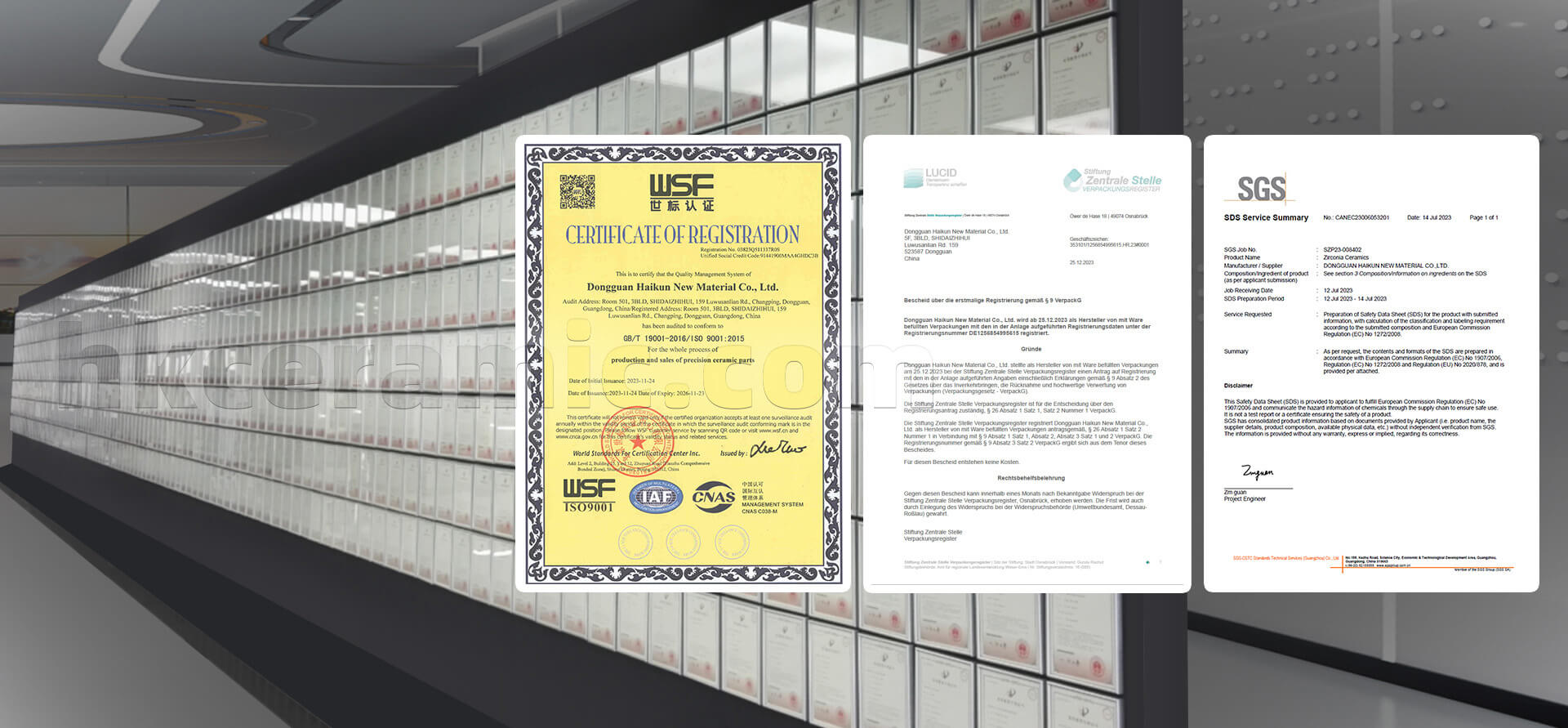

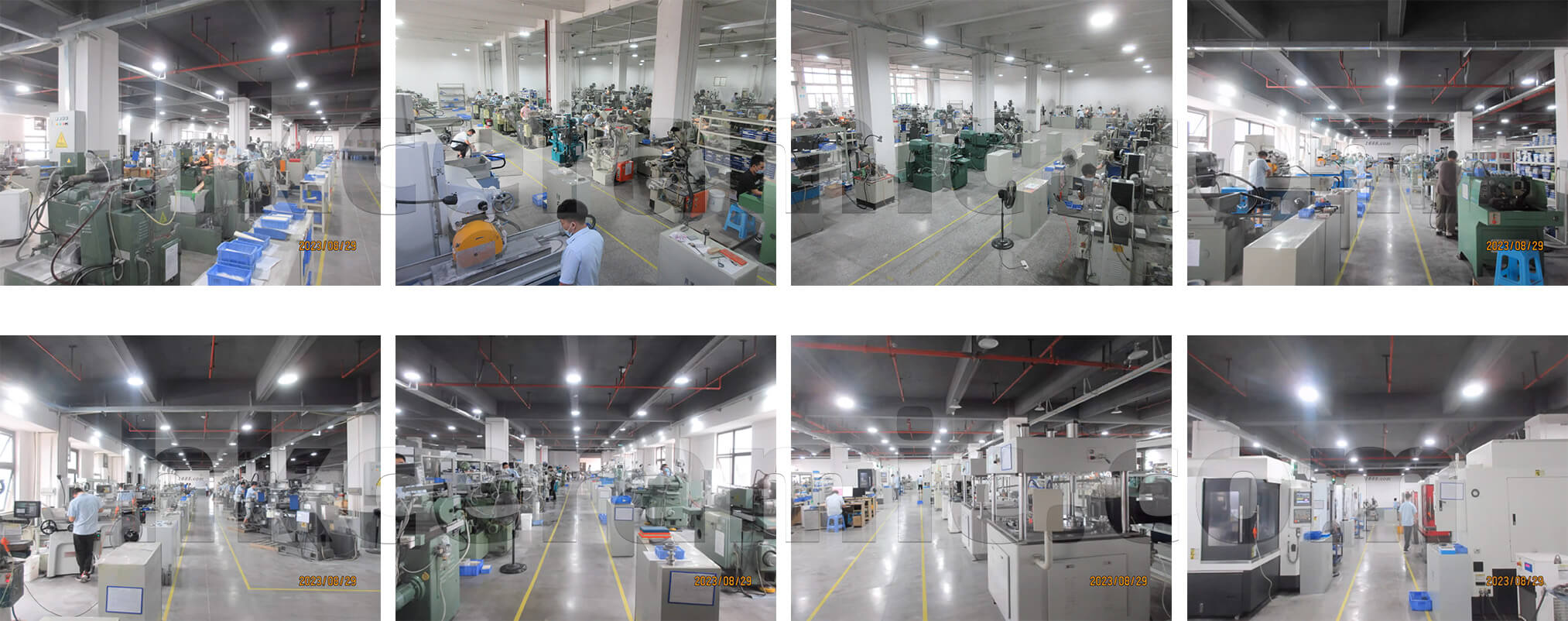
Comparison of ceramic material properties
Use our interactive ceramic material comparison chart to compare ceramic materials across different material properties.
Click the Property Button above to view the corresponding property comparison of precision ceramic materials
*The values in the table are typical material properties
Precision ceramic product customization process
Step 1
Contact us
Step 2
Technology Assessment
Step 3
Confirm the quotation
Step 4
Signing the contract
Step 5
Inspection and delivery
Step 6
Confirm Receipt

